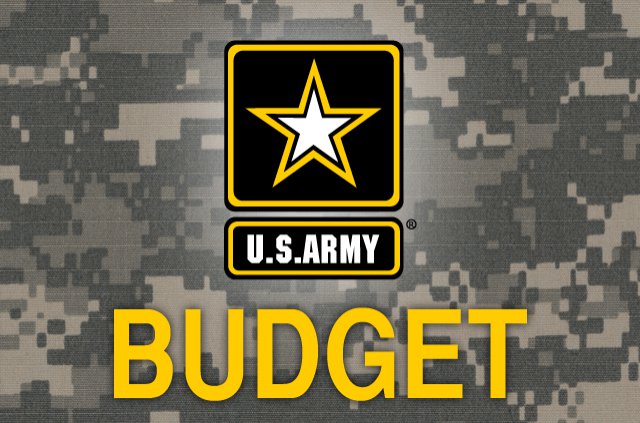Included within the $126.5 billion the Army has asked for in its fiscal 2016 base annual budget, is some $230 million for professional military education for Soldiers.
The request represents an increase of about 21 percent over the $190 million the Army asked for last year, said Maj. Gen. Thomas A. Horlander, director of the Army budget, during a Feb. 2 briefing at the Pentagon on the heels of the release of the president’s fiscal 2016 budget proposal.
“This will help reduce the current backlog of leader development courses that we have,” Horlander said. “This request also represents a seven percent increase for funding for civilian education. This critical funding will help lay the foundation for the Army’s future operating concept that we have been working on.”
Those training dollars for professional military education, or PME, come out of the Army’s $35.6 billion request for Operations & Maintenance, Army, or OMA. That request, Horlander said, is meant to “resource a more balanced readiness across the force, instead of a tiered readiness model that only has approximately one third of our 32 brigade combat teams in 2105 ready for contingency force operations.”
To increase that readiness, he said, the Army hopes to fund 19 combat training center rotations, what he called “the Army’s centerpiece of training.” Of those, 17 are for active Army units, and two are for National Guard units.
The OMA request also covers sustainment of Army equipment by increasing the level of funding for depot maintenance that will “help bring our equipment to a greater level of repair and restore the Army’s prepositioned stocks to ensure our expeditionary force capability,” Horlander said.
This year’s Army budget request attempts to strike a balance between end strength, readiness and modernization, and is on par with what the Army actually spent in 2014. The budget was developed “to provide the combatant commanders … with trained and ready land forces capable of conducting not only preventing and shaping operations, but decisive operations,” Horlander said.
This year’s request will allow the Army to move away from a “tiered readiness construct” to “a more balanced readiness across the force,” something Horlander said is required for today’s operating environment.
Were there to be no relief from sequestration, he said, tiered readiness levels will continue for the Army, “allowing only nine of the Army’s [brigade combat teams] to be fully ready as part of the Army’s contingency force pool.”
Continued sequestration will also cut Army modernization accounts by approximately 12 percent, will accelerate the drawdown of the active Army, and will mean that base infrastructure funding will be limited to critical life, health and safety repairs to facilities.
Davis S. Welch, deputy director of the Army budget, said this year’s request includes no program terminations, and “wisely allocates funds that maintain science and technology at a level to facilitate equipping the force of 2025.”
In line with the Army’s Aviation Restructure Initiative, the $16.1 billion requested for procurement this year prioritizes modernization of the AH-64 Apache, UH-60 Black Hawk and CH-47 Chinook fleets, as well as critical ground vehicle efforts for Abrams and Bradley modifications, double-v hulls for Stryker vehicles, and the Paladin Integrated Management program.
The Army hopes this year to procure 70 UH-60M and 24 HH-60M Black Hawk helicopters, as well as mission equipment packages; 64 remanufactured AH-64E Apache Block III aircraft and associated modifications to the AH-64D fleet; and 27 remanufactured CH-47F Chinooks as well as 12 newly-built CH-47F Chinooks and associated modifications to the Chinook fleet.
Fiscal 2016 funding also continues low-rate initial production for the Joint Light Tactical Vehicle with $308.3 million in funding. Welch said the Army expects to purchase as many as 49,000 of the vehicles by 2041.
LOWEST OCO IN A DECADE
At $20.6 billion, this year’s request for overseas contingency operations, or OCO, funds is the “smallest it’s been in over a decade,” Horlander said.
About $15.1 billion of the OCO request is for the Army, and of that, about $11.4 billion will support theater operations, including transportation, force protection, support contracts, pre-mobilization and pre-deployment training, and the reset of equipment returning from theater.
About $5.5 billion of that OCO request is for “pass through” accounts for the training and equipping of Iraqis, Syrians, and Afghan security forces. Additional dollars are marked for the Joint Improvised Explosive Device Defeat Fund and the Afghanistan Infrastructure Fund.
Horlander said the Army today has 140,000 Soldiers in 150 countries around the world, and that Army engagements world-wide are increasing.
“You will see that the U.S. Army is supporting more and more operations as the world continues to experience an increased velocity of instability,” Horlander said.
With that in mind, Horlander said, this year’s budget is meant to keep the Army resourced “to not only be trained and ready to address any number of emergent missions that may arise, but to have an effective engagement capability though regionally aligned forces that can ultimately, over time, prevent some of these crises from maturing.
“America’s Army must stay trained and ready,” Horlander said.










